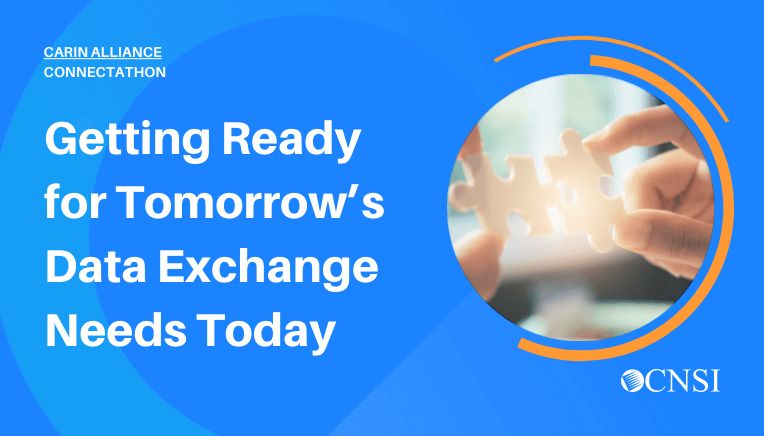
Connecting Health and Care: The Next Phase of Interoperability
March 18, 2016
Categories: Thought Leadership
Interoperability is the current buzzword for our nation’s health IT industry, and for a good reason. Interoperability–true interoperability–is the future of health care. If information is freely and securely shared among care providers it will make doctor’s jobs easier and improve the quality of care for all.

There are a number of roadblocks to interoperability, some of which we’ve discussed on this blog. But today the Centers for Medicare and Medicaid (CMS) are stepping up and leading by example. Acting Administrator of CMS Andy Slavitt and National Coordinator of Health Information Technology Karen DeSalvo recently penned a blog post in which they announced a new initiative to amend the “Interoperability Roadmap”, making connecting health and care for the nation easier for states.
States will now be able to request 90 percent matching funds from CMS to “connect a broader variety of Medicaid providers to a health information exchange.” What that means is care providers, whether they are a hospital, mental health facility, substance abuse treatment center or otherwise, will be interconnected
 Previously, alternative care, such as behavioral health, had not been connected to primary care. That gap meant that doctors, who may be providing emergency treatment, could not immediately access the full scope of a patient’s medical record. Beyond responding to emergency issues, the gap also made it difficult to track a patient’s adherence to prescribed treatment, which in turn made relapse all the more likely.
Previously, alternative care, such as behavioral health, had not been connected to primary care. That gap meant that doctors, who may be providing emergency treatment, could not immediately access the full scope of a patient’s medical record. Beyond responding to emergency issues, the gap also made it difficult to track a patient’s adherence to prescribed treatment, which in turn made relapse all the more likely.
CMS’ new initiative will help bridge the gap and encourage the seamless sharing of information. The return on investment is backed by studies. It’s been proven that improving population health – that is, proactive management of an entire population’s collective health – significantly cuts costs. The more preventable hospital visits we avoid through seamlessly managed care, the lower the cost.
Similarly, Slavitt and DeSalvo argue, “This investment should speed the adoption of alternative payment models that focus on the quality rather than the quantity of care provided.” The initiative will help us provide better care to Medicaid patients, pay for it through a better reimbursement model and save money. The incentives to join in on the interoperability initiatives in Medicaid should now heavily outweigh the costs and 90% of the companies that provide EHRs to hospitals have taken the interoperability pledge to show their commitment to Health IT’s future.
What do you think about CMS’ new initiative? Do you think the implementation of Medicaid interoperability will go as planned? Why or why not? Let us know by finding us on Twitter @CNSICorp.







